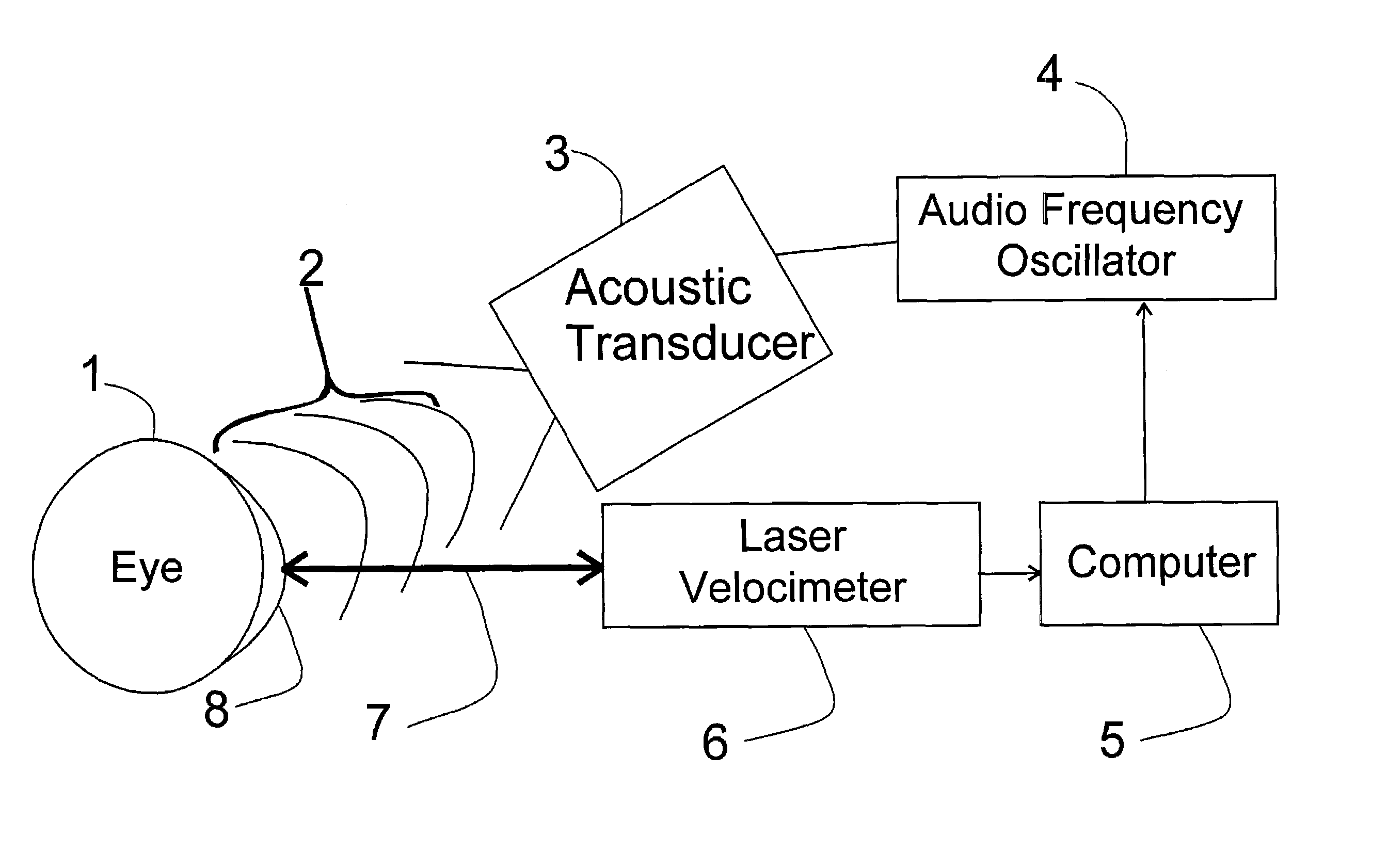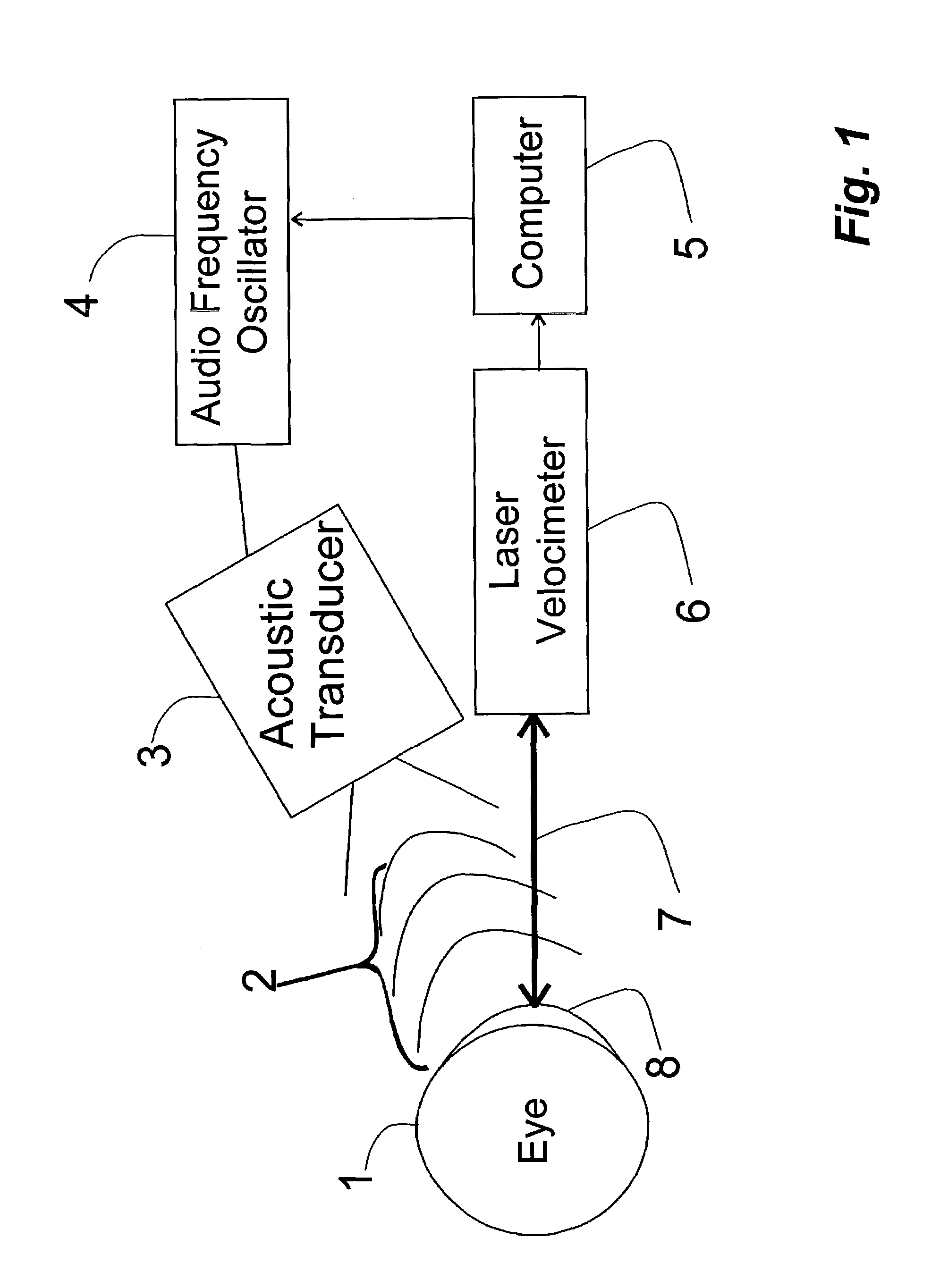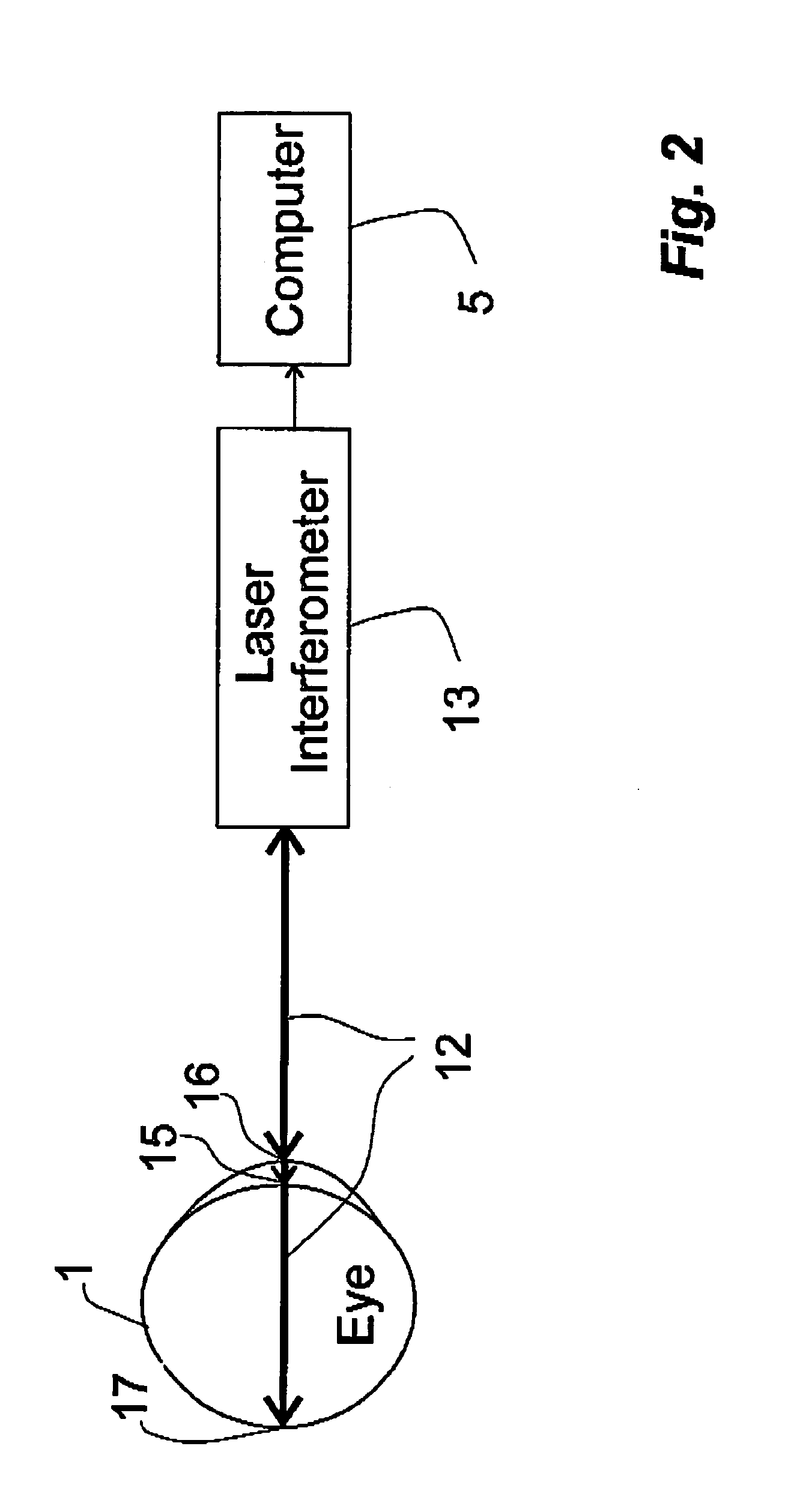Non-contacting tonometer
a tonometer and non-contact technology, applied in the field of tonometers, can solve the problems of increasing fluid pressure, less ability of eyeballs to cope, and high iop, and achieve the effect of improving the accuracy of iop determination
- Summary
- Abstract
- Description
- Claims
- Application Information
AI Technical Summary
Benefits of technology
Problems solved by technology
Method used
Image
Examples
example
[0050]Referring to FIGS. 3a and 3b there are illustrated velocity, phase lag and one or more points of resonance measured from a porcine eye at low and high IOP respectively. In this example, a measured pressure, representing IOP, was applied to the eye with an invasive fluid connection. Acoustical energy was applied using the frequency oscillator through a range of about 50 to 300 Hz for inducing vibrations in the eye. Preferably a range of frequencies is applied so as to aid in identifying occasional points of resonance. A laser velocimeter was applied to the surface of the eye to measure the vibrational response, namely velocity, at the surface of the eye.
[0051]Referring specifically to FIG. 3a, trace Va illustrates the vibrational velocity response of the acoustically excited eye having a low IOP. Note a maximal velocity inflection in trace Va at about 220 Hz which is indicative of vibrational resonance. Trace Pa illustrates the phase lag between the excitation energy and the os...
PUM
 Login to View More
Login to View More Abstract
Description
Claims
Application Information
 Login to View More
Login to View More - R&D
- Intellectual Property
- Life Sciences
- Materials
- Tech Scout
- Unparalleled Data Quality
- Higher Quality Content
- 60% Fewer Hallucinations
Browse by: Latest US Patents, China's latest patents, Technical Efficacy Thesaurus, Application Domain, Technology Topic, Popular Technical Reports.
© 2025 PatSnap. All rights reserved.Legal|Privacy policy|Modern Slavery Act Transparency Statement|Sitemap|About US| Contact US: help@patsnap.com



